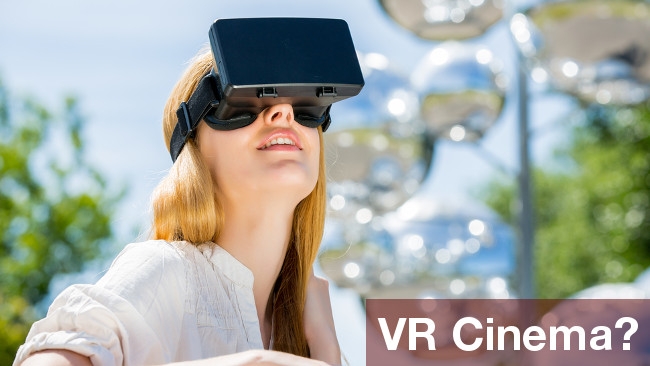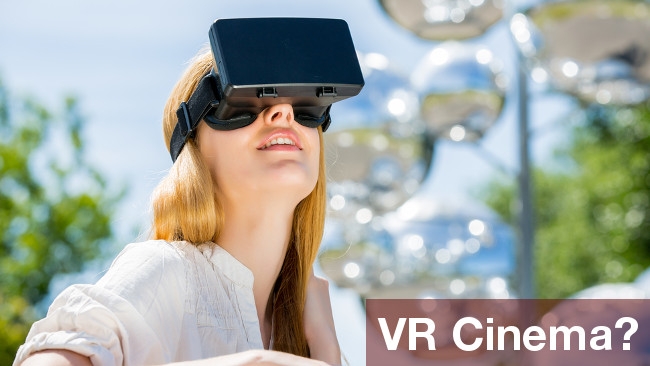
 Woman with VR headset graphic by shutterstock.com
Woman with VR headset graphic by shutterstock.com
While the bill at Sundance might be full of VR titles, Simon Wyndham thinks virtual reality video and cinema still seem set to replay 3DTV's troubles in the market.
Have we learned our lessons from 3D or are we going down the same road all over again? Make no mistake, VR for immersive 3D gaming is pretty cool, with new low latency headsets offering a far better experience than those clunky old things we used to see on science shows once upon a fairly long time ago.
Interactive vs. video
Playing a game such as Star Wars Battlefront shows just how good such an experience could potentially be, with incredibly hard to model environments, such as forests with plants and foliage that react realistically to being walked through, modeled almost to perfection. With ever more powerful processing, such environments will only become more realistic.
But that’s a game and games, as we know, are fully interactive. As the player, you make all the decisions and you can walk or fly to wherever you want within the confines of the game engine. Video, on the other hand, is not nearly as interactive. Video and film are linear experiences and, even if you can look around at any angle during a 360 degree presentation, you can still only view it as a passenger.
For single experiences, such as a VR view of being inside a rally car being driven by a top rider or maybe a live broadcast from the seat of an F1 car, 360 video might well have uses. But are they compelling enough for such an investment of time and money from both the manufacturers and by consumers?
VR does not lend itself well at all to storytelling. Cinema relies on the audience being told a story with all the various visual nuances being delivered by the director's vision. Watching a film in VR would be a rather surreal experience. You’d miss key moments from looking in the wrong direction and it would be like being in a room watching a play. There would be no structure to your viewing.
So VR film and video is really only suited to 'experiences' or other very specialist applications in terms of delivering content. That type of content may only have a limited shelf life, too. After all, how many of these very similar videos can you watch without the novelty wearing off? VR also has one other major shortcoming and it is one that was a major contributor to the failure of 3D.
I should mention at this point that Sundance 2016 is showing 30 VR ‘films’. So it would appear that there are those who disagree that VR can be used for storytelling. However if you take more than a cursory look at these productions' content, you find that they are, once again, based around giving novel experiences rather than something that could be termed mainstream storytelling. In fact one of them, based around Ridley Scott's film ‘The Martian’ is more video game than storytelling.
In effect the audience is merely a passive witness to the goings on in the environment. Pretty cool in its own right, but something you’d want to boot up in your living room as a substitute for a good old movie? I’m not so sure. VR also has one other major shortcoming, and it is one that was a major contributor to the failure of 3D.
A matter of (in)convenience
One of the major inconveniences of 3D is the need to wear silly looking glasses. Now make those 'glasses' heavier and bulkier, with two television screens right up against your retinas, and you effectively have VR, the most antisocial way of viewing video so far! Not only do you need to wear yet another device on your head, but communication with your fellow viewers is reduced, too. Then there is the need to be standing up. After all, unless you are an owl I doubt that your head can swivel 180 degrees.
Okay, yes, you can view 360 VR video without a headset, but then you are reduced to having to manually rotate the view with your finger or with a mouse., which is hardly the most convenient thing to do.
VR, I believe, is one technology that will continue to develop, for gaming, and indeed for FPV piloting of drones and other similar applications. But for consumer video and film, we may be falling into the same trap as 3D once again.
Graphic by Shutterstock
Tags: VR & AR


Comments